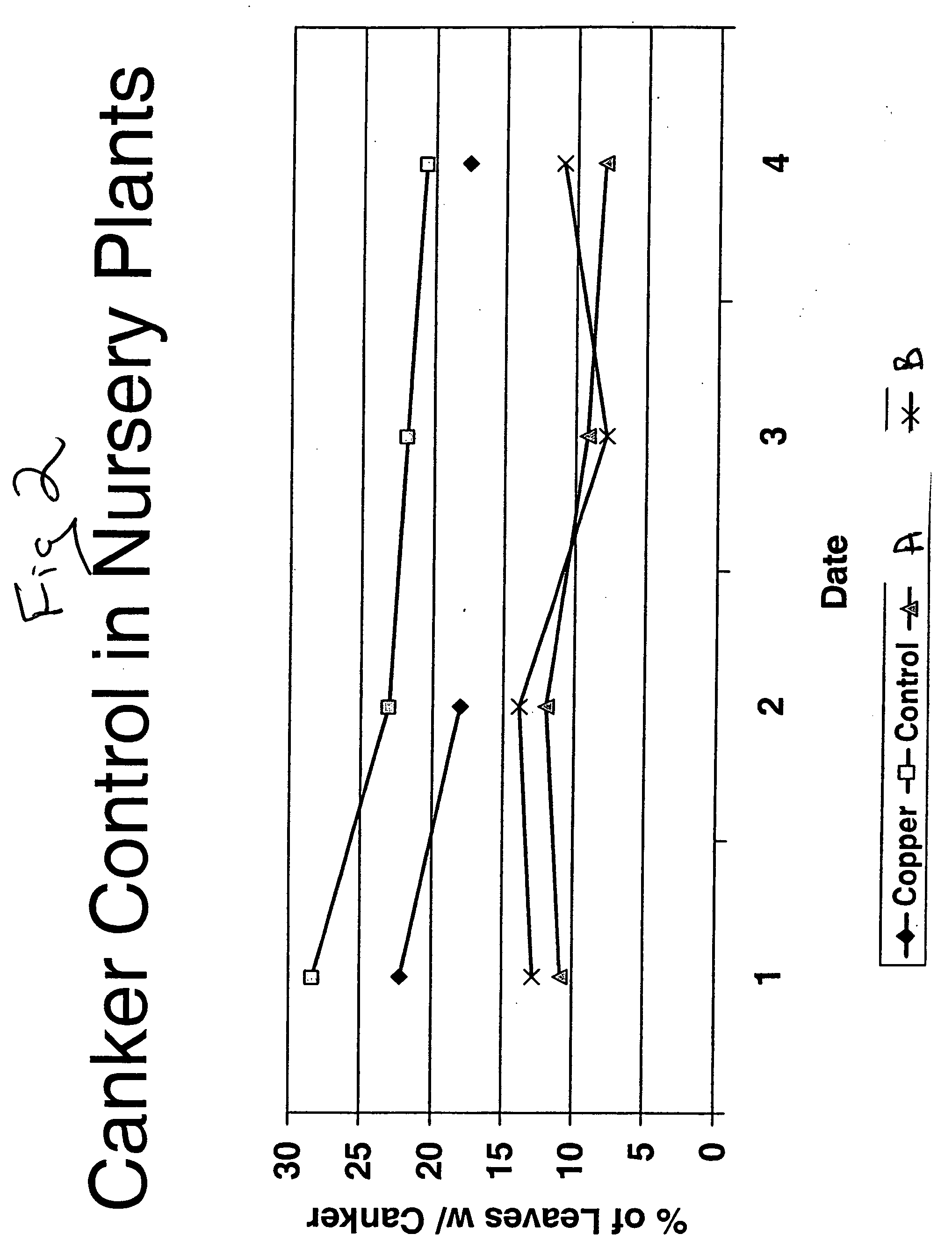Methods and compositions for reducing population of plant pathogen
a technology of plant pathogens and compositions, applied in the field of methods and compositions for reducing the population of plant pathogens, can solve the problems of growing citrus canker, and achieve the effect of reducing the microbial population
- Summary
- Abstract
- Description
- Claims
- Application Information
AI Technical Summary
Benefits of technology
Problems solved by technology
Method used
Image
Examples
example 1
The Present Method Reduces Population of Canker Microbes In Vitro and on Plants
[0060] The present method was employed against citrus canker microbe in petri dishes and on plants. Effective reduction of citrus canker microbe was seen in each situation.
Materials and Methods
In Vitro Experiments
[0061] A thin layer cell culture method was used. Nutritious agar was prepared and put in 9 cm diameter Petri dish. It was solidified and dried. Soft agar (0.6 gr agar+100 ml water) was melted and suspension of citrus canker microbe (Xanthomonas axonopodis pv citri) was added when temperature was moderated. Then the soft agar was poured over the nutritious agar. When it was solid, four holes, each 5 mm in diameter, were made. In those holes were placed the antimicrobial agents. The Petri dishes were then stored for 48 hours at 27° C.
[0062] In the first experiment, each antimicrobial composition (obtained as a stock solution) was diluted to 0.1 vol-% (Table 1).
[0063] In a second experiment...
example 2
The Present Method Provides Persistent Reduction of Microbe Population on Plants
[0070] The present method produced greater long term efficacy compared to a control composition.
Materials and Methods
[0071] The antimicrobial agent was Composition A as described in Example 1 (Surfacine®, commercially available from Lonza). The control composition was biguanide (0.6 wt-%).
[0072] The compositions were applied indoors to three small orange trees. 10 leaves on each tree were marked for control and test treatments. The test or control composition was applied to each marked leaf. The marked leaves were misted with water weekly through testing.
[0073] At the start of the test, after two weeks, and after 6 weeks, two leaves off of each tree were sampled. The sample leaf was cut off the tree, inoculated with 0.1 ml of a 105 CFU / ml culture of Pseudomonas aeruginosa ATCC 15442, and allowed to dry for one hour. Each sample leaf was then placed into a stomacher bag containing the appropriate ne...
PUM
 Login to View More
Login to View More Abstract
Description
Claims
Application Information
 Login to View More
Login to View More - R&D
- Intellectual Property
- Life Sciences
- Materials
- Tech Scout
- Unparalleled Data Quality
- Higher Quality Content
- 60% Fewer Hallucinations
Browse by: Latest US Patents, China's latest patents, Technical Efficacy Thesaurus, Application Domain, Technology Topic, Popular Technical Reports.
© 2025 PatSnap. All rights reserved.Legal|Privacy policy|Modern Slavery Act Transparency Statement|Sitemap|About US| Contact US: help@patsnap.com



